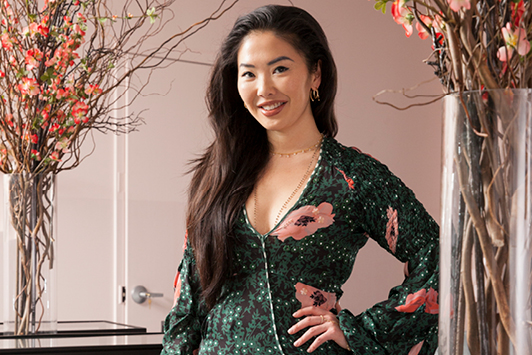
Why did you create Swoonery?
I looked at the industry, and everybody is trying to survive. No one is looking at the industry as a whole [in terms of] its inefficiency. Only a handful of companies have the money to advertise. The way the consignment works, people would go to their local store and not find the piece they had seen in the advertisement. And even if they found it…they didn’t have their size. Even if the consumer wanted something to buy, it was difficult to find.
The other problem for the consumer [is that] jewelry is a very personal purchase — it’s not detergent. It’s based on taste, on aesthetics. Human beings have been wearing jewelry since before they were using currency. It’s a very fundamental aspect of human nature about self-expression and identity.
I saw that technology, online e-commerce, wasn’t accounting for that. If I went on Amazon and typed the names of the brands, I could find them, but what if you don’t know the name of the brands? For jewelry, we had to develop technology that understood people’s tastes. The recommendation algorithm that we built didn’t exist in e-commerce. It’s visual, based on aesthetics. Instead of, “You’ve bought a Tiffany white-gold ring, we’re going to show you more Tiffany white-gold rings,” the way ours works is we see that you like design pieces that were very bold, we see that you like niche designers, we’re going to show you more of that.
There’s a two-sided benefit: For the consumer, [there’s] the feeling [you get] when you work with a very knowledgeable person that understands you. And for the brands, it ensures [they] are shown alongside adjacent brands.
How do you work with brands?
The way we select brands, we look at the integrity of the product and the vision behind the aesthetic. Diamonds and gold are commodities that fluctuate with the market. What holds value with the consumer is design. It’s a reflection of who they are. We always start with the product. We are careful [to note] who was the first to do it, and we respect that, as well as the quality of the merchandise and the quality of the products.
We’ve actually dropped a few brands. I looked at a ring from a brand we had, and I said, “There’s not enough gold around the bezel. You’re going to lose stones.” We had so many returns. It affected the consumer’s experience of Swoonery and of the brand.
We also look at the brand’s ability to maintain a business that has longevity. Are they really looking at the marketing effort? Are they able to create a business? Or is it just someone who has a hobby?
How do you interact with your customers?
For a few hours a day, every day, I man the chat and customer service line on the phone. These conversations are so important. A woman said, “I don’t shop in stores anymore. I saw jewelry here I never saw before.” Women will spend on jewelry what they spend on handbags. Everyone has the same handbags, whereas jewelry is something meaningful — special — and that you wear for more than one season.
Many people who come to the site say, “I want this, can you get it in my size?” That’s where the relationship with the brands comes in. We can make things by special order. It enables us to take the personal experience of a brick-and-mortar and make it scalable and accessible through a digital platform.
Are you investing in other startups?
I have not invested in any since I started Swoonery, into which I put my personal money. I invested in The RealReal back in 2010, right when they started the seed round. I am fascinated by startups in general. I love that there are companies that solve problems for the future. The companies that I invest in are always companies that start with a problem and a solution, as opposed to a gimmick.
One of the challenges we face is that our industry is very opaque, and you have to really understand it well. Even the players in our industry, they understand their own specialized area, but not the larger market. As I have been fundraising, when I speak to venture capitalists, they understand the tech, but they don’t understand the opportunities of the jewelry industry, which is an over-$32 billion industry. Our industry invests in hard assets — in gold, in diamonds, in real estate. It is not investing in startups. It’s a missed opportunity.
Image: Jean Z. Poh, fine-jewelry designer.Article from the Rapaport Magazine - May 2018. To subscribe click here.